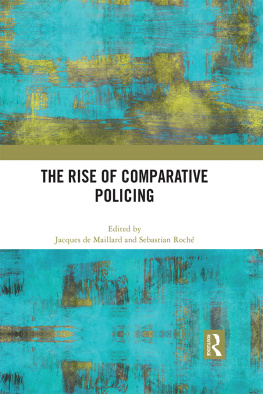
Malt
A Practical Guide from Field to Brewhouse
John Mallett

Brewers Publications
A Division of the Brewers Association
PO Box 1679, Boulder, Colorado 803061679
www.BrewersAssociation.org
www.BrewersPublications.com
Copyright 2014 by Brewers Association
All rights reserved. No portion of this book may be reproduced in any form without written permission of the publisher. Neither the authors, editors, nor the publisher assume any responsibility for the use or misuse of information contained in this book.
Carapils/Carafoam, Carahell, Carafa, Caramnch/Caramunich, Carared, Caraamber, Caraaroma, Carawheat, and SINAMAR are registered trademarks of Weyermann Malting Company.
ISBN-13: 9781-938469121
ISBN-10: 1938469127
EISBN: 978-1-938469-16-9
Library of Congress Cataloging-in-Publication Data:
Mallett, John, 1964
Malt : a practical guide from field to brewhouse / by John Mallett.
pages cm
Includes .
ISBN 9781-938469121ISBN 1938469127 1. Malt. 2. Malt liquors. I. Title.
TP570.M26 2014
663.6dc23
2014038768
Publisher: Kristi Switzer
Technical Editors: Joe Hertrich, John J. Palmer
Copyediting: Oliver Gray
Indexing: Doreen McLaughlin
Production and Design Management: Stephanie Johnson Martin
Cover and Interior Design: Kerry Fannon and Justin Petersen
Cover Illustration: Alicia Buelow
To my family: Linus, Kat and Maggie.
This work is evidence of your unwavering support and patience; thanks for making it possible.
Table of Contents
Writing a book was a stretch for me. I am an inefficient writer and easily distracted. Quite simply, this book would not have been possible without the tremendous patience of my publisher, Kristi Switzer. Her constant encouragement and gentle prodding have helped to fundamentally shape this work. Over the past two years, as this book slowly came together, she was an indispensable asset, guiding me through the pitfalls of writing. Too often, the competing pressures of work and family pushed writing to the back of the line. She gently kept me on track, encouraging and supporting me, finding resources when they were most needed.
It was she who suggested John Palmer to help with the content of the book. In addition to his thorough technical edit, his assistance clarifying certain sections has been more than generous. Joe Hertrich, Malts other technical editor, has been a source of information about malt for many, many years. His willingness and ability to share knowledge is greatly appreciated. Thanks to Oliver Gray for editing my writing, and Iain Cox who provided direction at a crucial time.
The Bells familyLarry, Laura, and the entire staffhave been incredibly supportive over the many years I have had the pleasure of working with them. That support has provided me the chance to dig deeply into barley and malt, and made this book possible. Id also like to offer a special thanks to the Bells malt team: Ed Ruble, Andy Farrell, Andrew Koehring, and Rik Dellinger. You guys are awesome.
Andrea Stanley of Valley Malt pointed the way to some fantastic resources. She is a fellow malt history nerd, and with her husband Christian, is helping to reshape the small-scale malting landscape in the US. Their enthusiasm for malt is absolutely infectious, and it is a pleasure to know and work with them.
Researching this book has been an absolute dream. I had the chance to interact with plenty of smart and passionate people who gave valuable insight over the years. They include (in no particular order): Mike Turnwald, Dave Thomas, Chris Swersey, Matt Brynildson, Jennifer Talley, Wayne Wambles, Jonathan Cutler, Tom Nielsen, Pat Hayes, Paul Schwarz, Bruno Vachon, Dave Kuske, John Harris, Peter Simpson, Susan Welch, Mary-Jane Maurice, Bill Wamby, Alec Mull, Joe Short, Clay Karz, Alex Smith, Mike Davis, Scott Heisel, Sean Paxton, Yvan de Baets, Dan Carey, Gordon Strong, Scott Dorsch, Bret Manning Van Havig, Jace Marti, and Eric Toft.
By my side throughout this project has been another set of inspiring people who I have never actually met. They are the authors that have written so extensively and astutely about malt, chief among them Dennis Briggs (Malts and Malting) and H. Stopes (Malt and Malting).
Thanks to everyone for the opportunity and the journey; its been a blast.
-John Mallett
For decades, John Mallett and I have crisscrossed and intersected each others careers like the warp and weft of burlap malt sacks. I first met John (virtually) when I was working in Chungcheongbuk-do, South Korea, commissioning the new Jinro-Coors tower malthouse in 1993 (where, at times, I marveled at 100 pound men carrying 100 pound sacks of local barley up the steps at the loading dock). During the spare time that came with the hurry-up-and-wait activities of new plant commissioning, I co-authored (with Professor Sir Geoffrey Palmer) a few articles about malt for the March-April 1994 The New Brewer magazine. John was technical editor for The New Brewer then, so my articles ended up in his inbox.
After returning to the US, I would periodically bump into John at various brewing functions. He was assisting several different breweries in Colorado and elsewhere, while I continued working for Coors in assorted R&D, malting, and brewing posts around the world, until I retired in 2007. John scaled up in brewery size and position, and is now Production Director at Bells Brewery in Kalamazoo, Michigan. Bells is a large, regional craft brewery that grows its own barley for malting. He also teaches at Siebel Institute of Technology and writes technical articles on all aspects of brewing.
Recently, our paths crossed again when we realized we were both writing books about malt. Mine, The Craft Maltsters Handbook, recently published by White Mule Press (Hayward, California), and Johns book published by the Brewers Association (Boulder, Colorado). When we bumped into each other at the 2014 Craft Brewers Conference in Denver, I asked John about possible redundancies between our two projects. He heartily replied, dont worry; yours is written from the maltsters point of view and mine is the brewers perspective. They will complement each other! He was right. They do nicely.
John talks about the heavy-lifting that malt does for brewers. In this book, John has done the heavy lifting for us by presenting (in a very readable fashion) the chemistry of malt carbohydrates, sugars, amino acids, proteins, and lipids. Throughout the book, he elegantly describes the history and chemistry of Maillard reaction products, derivation of caramel colors and flavors in the kiln and kettle. John pulls from his own experience as a brewer, and brings in several other notaries from the craft brewing and production malting worlds to emphasize the important and sometimes surprising practical aspects of using malt to make beer. The book flows like the air moving through drying barley, describing functionality, flavors, fermentability and unfermentables extracted from malt, including how many malty factors can be unintentionally over-represented in beer. As John discusses brewing recipe formulation, one brewer he interviewed compares the process to painting. Color, depth, and brushstrokes can be just like the different qualities and quantities of malts. Other brewers think of their brewing formulae as musical compositions, with different malts providing bass, middle, and treble notes.
Next page












